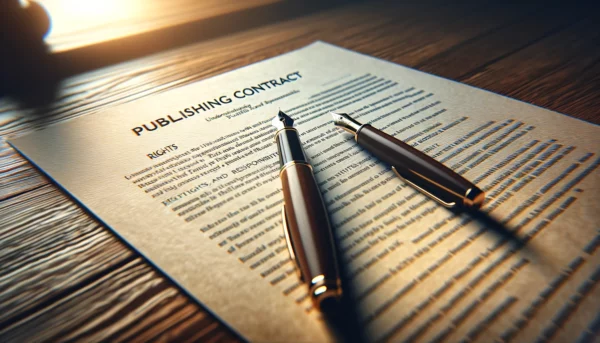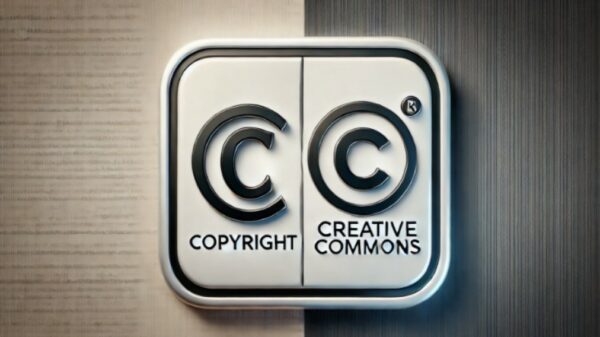Before publishing a book, safeguarding your intellectual property is paramount. This proactive measure not only secures your rights as an author but also fortifies your work against potential misuse and infringement. The essence of protecting a book involves understanding copyright law, registering your copyright, and possibly consulting with an intellectual property attorney. These steps ensure that your creative expressions, once fixed in a tangible form such as a manuscript, are legally recognized and protected under copyright law.
Additionally, these precautions can help in deterring unauthorized use of your work and provide a solid basis for legal action should infringements occur. This introduction outlines the essential steps and legal considerations that every author should be aware of to effectively shield their literary work before introducing it to the world.
Protecting Your Book: Key Concepts and Initial Steps
Protecting your book begins with understanding the foundational concepts of intellectual property and copyright law. Intellectual property (IP) refers to creations of the mind, such as inventions, literary and artistic works, designs, symbols, names, and images used in commerce. For authors, the most relevant form of IP is copyright, which specifically protects literary works—anything written, such as novels, poems, essays, and even software code.
Copyright is a legal form of protection provided by the laws of a country to the creators of original works of authorship, including literary, dramatic, musical, artistic, and certain other intellectual works. This protection is available to both published and unpublished works. Essentially, copyright secures the author’s exclusive rights to reproduce, distribute, perform, display, or license the work. Importantly, copyright does not protect ideas, concepts, or techniques, but the expression of those ideas in a fixed form.
Registering copyright, while not mandatory, significantly enhances your legal protections. Registration makes it much easier to take legal action against infringement and to claim statutory damages and attorney’s fees in court. This can act as a deterrent to potential infringers who know that the copyrighted work is registered and that the copyright owner is serious about protecting their rights.
The registration process involves several key steps:
- Preparing Your Work: Ensure that the work is complete and fixed in a tangible form. For literary works, this typically means that the work must be written down or saved in a way that it can be perceived either directly or with the aid of a machine or device.
- Filing the Application: You can file a copyright application using the online services of the Copyright Office or by mailing a physical form. The online registration system, known as the Electronic Copyright Office (eCO), is preferred for its lower filing fees and quicker processing time.
- Deposit Requirement: Submit copies of the work. For published works, the number of copies required varies depending on the type and format of the work. For online works, this might simply involve uploading a digital file.
- Paying the Fee: Fees vary depending on the method of registration and whether the work is published or unpublished.
Once registered, the work is officially part of the public record, which includes a copyright certificate. This registration not only serves as a prima facie evidence of the validity of the copyright and the facts stated in the certificate but supplementary registration also puts the public on notice of your copyright, thereby helping prevent infringement.
Given the complexities of copyright and intellectual property law, it is prudent to seek legal advice, especially if you are dealing with contractual issues or international copyright protection. An intellectual property attorney can provide invaluable guidance on how to navigate the intricacies of copyright laws and ensure that your work is fully protected. This initial investment in securing expert advice could save immense time and resources by preventing future legal disputes.
The Role of the Copyright Office
The U.S. Copyright Office plays a critical role in the protection of intellectual property across the nation. As a key division of the Library of Congress, its primary function is to administer copyright laws and provide essential services to copyright holders. This includes processing copyright registration applications, maintaining records of copyright ownership, and offering advisory opinions on copyright law and policy.
One of the significant advancements in the services provided by the Copyright Office is the introduction of the Electronic Copyright Office (eCO). The eCO system allows authors and other copyright holders to register their works electronically, which is both cost-effective and faster than traditional paper submissions. This online system facilitates the entire process, from application and fee payment to the final submission of deposit copies of the work, all of which can be done from the comfort of one’s home or office.
Electronic registration through the eCO provides several benefits:
- Reduced Costs: eCO registration fees are generally lower than the fees for paper registrations.
- Faster Processing: Electronic applications are processed more quickly than paper applications, which means copyright protections can commence sooner.
- Convenience: Digital uploads of works eliminate the need for physical mailings.
Moreover, the registration of a work with the Copyright Office, whether done electronically or via traditional methods, places it into the public record. This public record is a vital element in the copyright protection process. It includes the copyright holder’s name, a description of the work, and other critical information that can be accessed by the public. The inclusion in the public record is crucial for the enforcement of copyright, as it serves as prima facie evidence of the copyright holder, ownership, and the work’s copyright status.
Additionally, the Copyright Office issues a copyright notice upon registration, which is a public claim of ownership and a warning to potential infringers that the work is protected. This notice significantly bolsters the legal standing of copyright holders, making it easier to defend against infringement and unauthorized use. In conclusion, the Copyright Office not only facilitates the registration of copyrights but also enhances the protection and enforceability of copyright rights through its comprehensive systems and records.
Copyright Registration Process
Registering a copyright is an essential step for authors and creators to ensure their work is legally protected against unauthorized use. This detailed guide will walk you through the process of registering your copyright, from the start of registration and initial application to the final submission.
Step 1: Prepare Your Work
Ensure your work is complete and fixed in a tangible medium of expression, meaning it must be in a form that can be perceived directly or with the aid of a device. This could be a printed manuscript, a PDF file, or another digital format.
Step 2: Choose the Correct Application Form
For most literary works, the standard application is appropriate. This can be accessed and completed via the U.S. Copyright Office’s Electronic Copyright Office (eCO) online system. The standard application is suitable for a single work created by one or a few authors and not intended to be used for works made for hire, compilations, or collective works.
Step 3: Account Creation and Logging In
If you are a new user, you will need to create an account on the eCO website. Once your account is set up, log in and select “Register a New Claim” to start your application. Follow the prompts to enter the type of work you are registering.
Step 4: Complete the Application
Fill out the application form, which includes sections for:
- Type of Work: Select “Literary Work” for books and similar creations.
- Title of the Work: Provide the title as it appears on the manuscript.
- Publication Details: If the work has been published, include the date and location of the first publication.
- Authors and Claimants: Input details about the author(s) and any claimants if the copyright claimant is not the author.
Be thorough and accurate, as this information will be part of the public record.
Step 5: Pay the Registration Fee
After completing the application, you will be directed to pay the registration fee. As of 2023, the fee for an online application is typically lower than for a paper filing. Payments can be made via credit card, debit card, or through an ACH transfer.
Step 6: Submit Deposit Copies
Depending on whether your work is published or unpublished, you will need to submit copies of your work. For online submissions:
- Unpublished Works: Upload one complete copy of the manuscript.
- Published Works: Upload two complete copies of the best edition. If your book is only available online, screenshots or PDFs of the entire book can be used.
Follow the eCO system’s prompts to upload digital files directly. Make sure the files are in an acceptable format (e.g., PDF, JPEG) and are free of viruses and accessible for examination.
Step 7: Review and Confirm Submission
Before finalizing, review your application for any errors or missing information. Once confirmed, submit your application. You will receive a confirmation email with a case number that you can use to track the status of your registration.
Post-Submission
After submitting, your application and copyright claim will be reviewed by the Copyright Office. If everything is in order, they will register your copyright and issue a certificate of registration. This process can take from a few weeks to several months, depending on the volume of applications being processed.
Registering your copyright electronically through the eCO system is straightforward and provides legal assurance that your work is protected under U.S. copyright law. While the process involves several steps and detailed information, it ensures that your rights are secure and enforceable. This preemptive action is a critical component of safeguarding your intellectual and creative investment.
Your Publishing Journey Awaits – Start NowConsulting an Intellectual Property Attorney
Consulting an intellectual property (IP) attorney can be a pivotal step in safeguarding the rights of authors and creators. IP attorneys specialize in the nuances of copyright law and provide expert advice that can protect your work and enhance its commercial potential.
Benefits of Legal Advice from a Specialized Attorney
An IP attorney can offer tailored legal advice that aligns with the specific needs and challenges of your work. This professional guidance is particularly beneficial for understanding complex legal jargon and ensuring that your copyright registration is filed correctly and comprehensively. Furthermore, an attorney can help strategize how to maximize the protection of your work, including advising on licensing opportunities and the scope of copyright protection.
Handling Copyright Claims and Infringement Issues
One of the primary roles of an IP attorney is to assist in the enforcement of copyright protections. This includes drafting cease and desist letters to stop infringement, negotiating settlements, and representing clients in copyright disputes in court. Attorneys are crucial for navigating the legal landscape should someone else use your work without permission. They can help prove ownership, claim damages, and restore the integrity of your copyrighted material.
Costs Involved
The costs of hiring an IP attorney can vary based on the complexity of your case, the attorney’s experience, and geographic location. Typically, attorneys charge either an hourly rate or a flat fee for specific services. For copyright registration, some attorneys may offer a flat filing fee, that includes preparing and filing your copyright application. Additional fees might apply for handling more complex issues, such as responding to a copyright office action or litigating a copyright infringement case.
While the expense might seem substantial, investing in competent legal advice can save significant amounts of money and time in the future by preventing costly litigation or the loss of rights due to improper registration or enforcement. Moreover, the peace of mind and security provided by professional guidance are invaluable for authors aiming to protect their creative expressions. Thus, consulting an IP attorney should be considered a necessary investment for securing the full benefits of copyright protection.
Navigating the Publishing Process
Navigating the publishing process is a critical step for authors after ensuring their work is protected through copyright registration. Authors face a fundamental decision: whether to self-publish or partner with traditional publishers. Each route offers distinct benefits and challenges, and understanding these can help you choose the path that best suits your work and goals.
Self-Publishing vs. Working with Publishers
Self-Publishing:
Self-publishing gives authors full control over the publishing process, from the design and formatting of the book to its marketing and distribution. This method allows for higher royalty rates per book since the author assumes all upfront costs. The biggest advantages are the speed to market and complete creative autonomy. However, self-publishing also means the author must handle or outsource every aspect of the publishing process, including editing, design, distribution, and marketing, which can be daunting and time-consuming.
Traditional Publishing:
Working with a publisher reduces the logistical burden on the author. Publishers provide professional editing, design, marketing, and distribution services, and they bear the initial financial risk. This can lead to greater exposure and potentially higher overall sales due to the publisher’s established distribution channels. However, authors often receive lower royalties per book compared to self-publishing and may have less control over the creative process and timeline.
Importance of Publisher’s Contact Information and Copyright Page
Regardless of the publishing route chosen, it is vital to ensure that the book contains accurate publisher contact information and a properly formatted copyright page. This page serves not only as a declaration of copyright but also provides essential information like the edition of the book and the International Standard Book Number (ISBN), which uniquely identifies the book and its publisher.
The copyright page helps assert the author’s rights and is a critical reference point for gaining permission and handling infringement issues. It should clearly state the copyright holder’s name (author or publisher), the year of publication, and a copyright notice. This page acts as a legal barrier, informing readers and users of the work about the ownership and their limitations regarding its use.
Protecting Against Unauthorized Use and Understanding Fair Use
Protecting your work from unauthorized use while understanding fair use doctrines is crucial. Fair use allows limited use of copyrighted material without permission for purposes such as criticism, comment, news reporting, teaching, scholarship, or research. As an author, you should understand these boundaries to both defend your own rights and avoid infringing on the rights of others.
If unauthorized use occurs, the copyright page and your registration details enable easier enforcement of your rights. You can issue takedown notices, seek damages in court, or reach settlements—all actions that might require the assistance of a legal professional.
In conclusion, navigating the publishing process effectively requires understanding the different publishing models, the importance of the copyright page, and how to protect your work from misuse while respecting the rights of others. These considerations are key to maintaining the integrity and profitability of your literary endeavors.
Special Considerations and Additional Protections
Navigating copyright protection extends beyond national boundaries and simple print formats. Authors must consider several special aspects to fully safeguard their work, especially in a global and digital context.
International Copyright Protection Under the Berne Convention
The Berne Convention plays a crucial role in international copyright law, providing a unified system that protects works across the member countries without the need for additional registration in each country. Once you know how to register a copyright, and you go through the process of it in your home country, the rights are automatically protected in all other Berne Convention signatory countries. This treaty encompasses over 170 countries, ensuring widespread protection of your literary works and recognizing your rights as they are in your country of origin.
Using ISBNs and Protecting Short Online Literary Works
An International Standard Book Number (ISBN) is critical for the broader distribution and identification of your book. It facilitates easier listing and sales through bookstores and online platforms and is essential for managing inventory and sales records.
For authors of short online literary works—such as essays, poems, and short stories—protection can be trickier. Regularly registering these works, as you would a full-length novel, ensures they are safeguarded against unauthorized use. This process also helps in establishing a public record that can be crucial in copyright infringement cases.
Poor Man’s Copyright and Its Limitations
The concept of poor man’s copyright—mailing a copy of your work to yourself to establish a date of authorship—is a popular myth but offers no legal protection. It does not stand up in a copyright infringement lawsuit as it provides no proof of actual copyright ownership or creation date compared to formal registration with a copyright office. Formal registration, while it may involve some cost, provides robust legal backing and is essential for enforcing copyright laws effectively.
Understanding these special considerations and additional protections is vital for ensuring your literary work is safeguarded in the complex landscape of global and digital copyright law.
Common Challenges and How to Overcome Them
Navigating the landscape of copyright protection involves addressing several common challenges, particularly dealing with infringement, understanding the implications of exclusive rights, and effectively enforcing your copyrights. Here’s how to approach these issues:
Handling Copyright Infringement and Unauthorized Derivative Works
Copyright infringement occurs when someone uses your copyrighted work without permission. This can range from reproducing the original work to creating unauthorized derivative works, such as adaptations or translations. To handle these issues, it’s crucial to monitor the usage of your work actively. Tools such as digital content management systems can help you track where and how your work is being used online.
If infringement is detected, the first step is usually to contact the infringer with a cease-and-desist letter, clearly stating your rights and demanding that the unauthorized use stop. If the infringement persists, legal action may be necessary, and here, the advice and representation of an intellectual property attorney become invaluable.
The Role of Statutory Damages and Exclusive Rights in Protecting Your Work
Registering your copyright grants you exclusive rights, including the right to reproduce, distribute, perform, display, and create derivative works based on the original. If your case goes to court, you may be entitled to statutory damages, which can be a significant deterrent against future infringements. These damages are awarded in court as a way to compensate the copyright owner and penalize the infringer, and they can be substantial depending on the severity and willfulness of the infringement.
Seeking Redress and Enforcement of Copyright
Effective enforcement of copyright involves knowing when and how to take legal action. Beyond sending cease-and-desist letters, you can file a lawsuit for infringement. A successful copyright lawsuit can result in court orders that may include injunctions against the infringer, monetary damages, and in some cases, recovery of attorney’s fees.
Preventive measures, such as registering your work and clearly marking your copyrights, combined with the readiness to enforce your rights through legal channels, play a critical role in protecting your intellectual property. Understanding and actively managing these aspects of copyright law can help mitigate risks and ensure that your creative output is respected and legally safeguarded.
The Value of Early Copyright Registration and Vigilant Protection
In conclusion, protecting your literary work is not just a legal formality; it’s a crucial step in safeguarding your creative expression and ensuring that your rights are preserved in a tangible, enforceable way. Copyright registration fortifies your position as the rightful owner, provides legal grounds for any claims against infringement, and enhances your ability to monetize your creative work, without undue exploitation.
Maintaining copyright involves vigilance and an ongoing commitment to overseeing how your work is utilized in public domains. Regularly reviewing how your works are distributed and accessed can help you catch and address copyright infringements quickly. Additionally, staying informed about changes in copyright law and new technologies for tracking and managing intellectual property can also greatly benefit authors.
Start the registration process as soon as your work is in a tangible form. Early registration not only secures your rights from the outset but also deters potential infringers who recognize the seriousness of a formally protected copyright. Remember, the protection of your intellectual property is not just about legality but respecting and valuing the originality and effort that define your creative contributions. Embrace these steps to protect your work and ensure it continues to thrive in the literary world.








